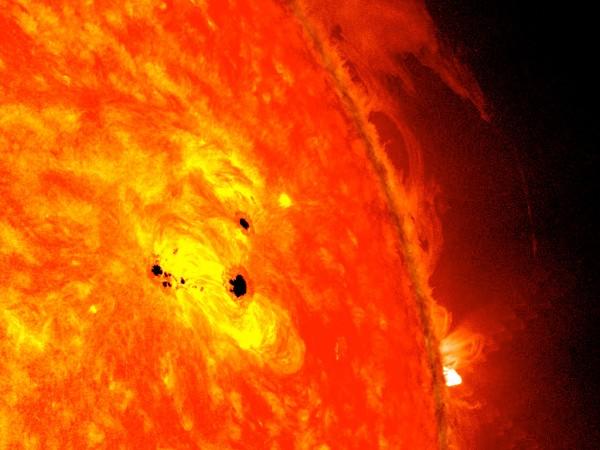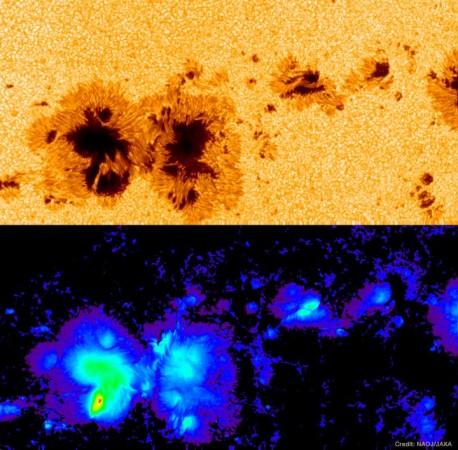
While analyzing some four-year old solar data, a team of Japanese astronomers stumbled upon a monster sunspot with strongly magnetized iron atoms. Further analysis has now revealed that the sunspot was the source of the strongest magnetic field ever directly measured on the surface of the Sun.
After analyzing data for five days around the appearance of this record breaking magnetic field, astronomers at the National Astronomical Observatory of Japan (NAOJ) have determined that it was caused by gas outflow from one sunspot pushing against another.
Astronomers Joten Okamoto and Takashi Sakurai of NAOJ were analyzing data of February 4, 2014 taken by the Solar Optical Telescope onboard HINODE when they detected the sunspot. The data indicated that the magnetic field had strength of 6,250 gauss, which was more than double the strength of the 3,000 gauss found around most sunspots.
A sunspot mostly consists of circular dark core called the "umbra", which has a vertical magnetic field and radially elongated fine threads, called the "penumbra", with a horizontal field. Since the darkness of the umbrae is generally linked to the magnetic field strength, the strongest magnetic field in each sunspot is usually located in the "umbra".
But, the sunspot in question was found to have an exactly opposite trait. The astronomers discovered that the strongest magnetic field in this case was not in the dark part of the umbra, but was actually located at a bright region between two sunspots.

After tracking the same sunspot for several days, HINODE revealed that the strong field was always located at the boundary between the bright region and the umbra. The horizontal gas flows along the direction of the magnetic fields, on the other hand, turned down into the Sun when they reached the strong-field area.
The bright region with the strong field, therefore, is a penumbra belonging to the southern umbra. The horizontal gas flows from the southern umbra compressed the fields near the other umbra, and enhanced the field strength to more than 6,000 gauss, according to astronomers.
"HINODE's continuous high-resolution data allowed us to analyze the sunspots in detail to investigate the distribution and time evolution of the strong magnetic field and also the surrounding environment," Okamoto said in a statement.
The study was recently published in the journal Astrophysical Journal Letters.








